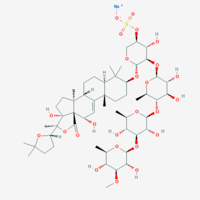
Photo from wikipedia
Melanocytes play an important role in maintaining epidermal homeostasis by producing melanin and protecting the skin from harmful environmental factors. However, excessive up- or down-regulation of melanin production often causes… Click to show full abstract
Melanocytes play an important role in maintaining epidermal homeostasis by producing melanin and protecting the skin from harmful environmental factors. However, excessive up- or down-regulation of melanin production often causes hyper- or hypo-pigmented disorders, respectively, which affect the patient’s quality of life. Therefore, various strategies for modulating melanin levels have been developed by the pharmaceutical and cosmetic industries. We reported previously that voglibose, which is a well-known anti-hyperglycemic agent, could be used as an anti-melanogenic agent by inhibiting α-glucosidase activity and reducing tyrosinase protein levels. Of the other representative anti-hyperglycemic agents, acarbose showed less anti-melanogenic activity despite its potent anti-hyperglycemic efficacy. In this study, we report that acarbose exhibited considerable anti-melanogenic activity when melanocytes were co-treated with acarbose and a digestible sugar, such as maltose. Simultaneous treatment with maltose augmented the inhibitory effect of acarbose on α-glucosidase activity by enhancing its stability under physiological conditions, leading to the down-regulation of tyrosinase. These results suggest that the co-treatment of anti-hyperglycemic agents with hydrolysable sugars may be a useful tool for reducing glucosidase-associated melanogenesis as a potent sugar-based anti-melanogenic regimen.
Journal Title: Archives of Dermatological Research
Year Published: 2017
Link to full text (if available)
Share on Social Media: Sign Up to like & get
recommendations!